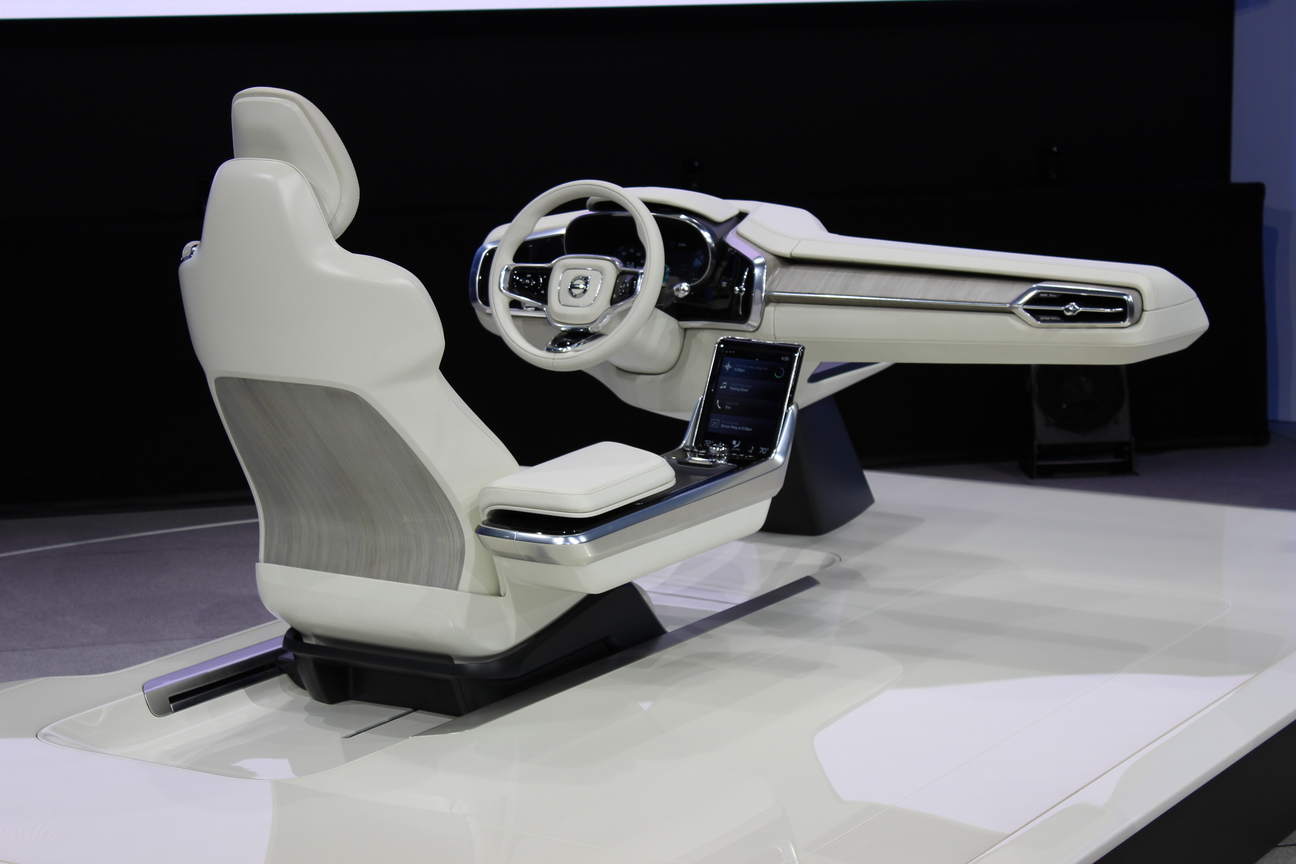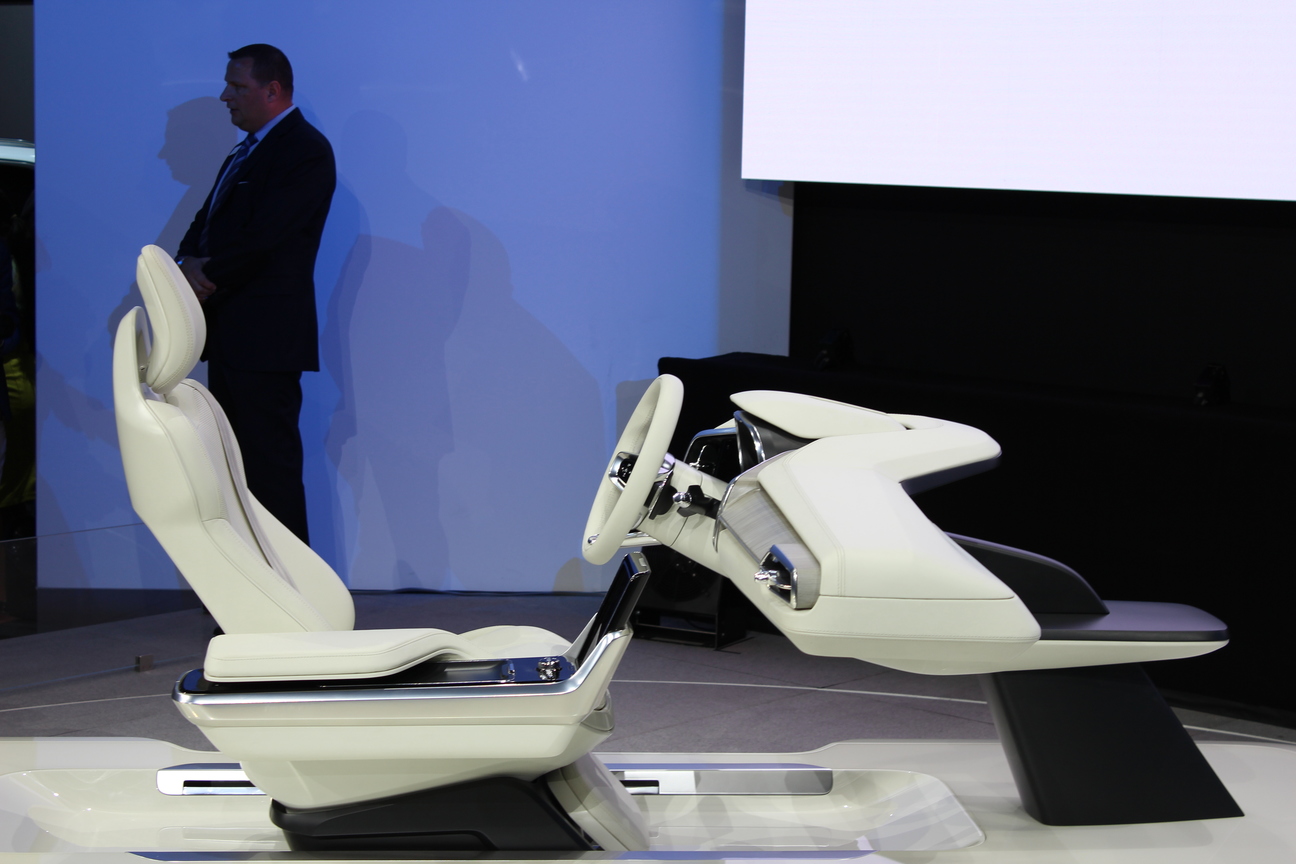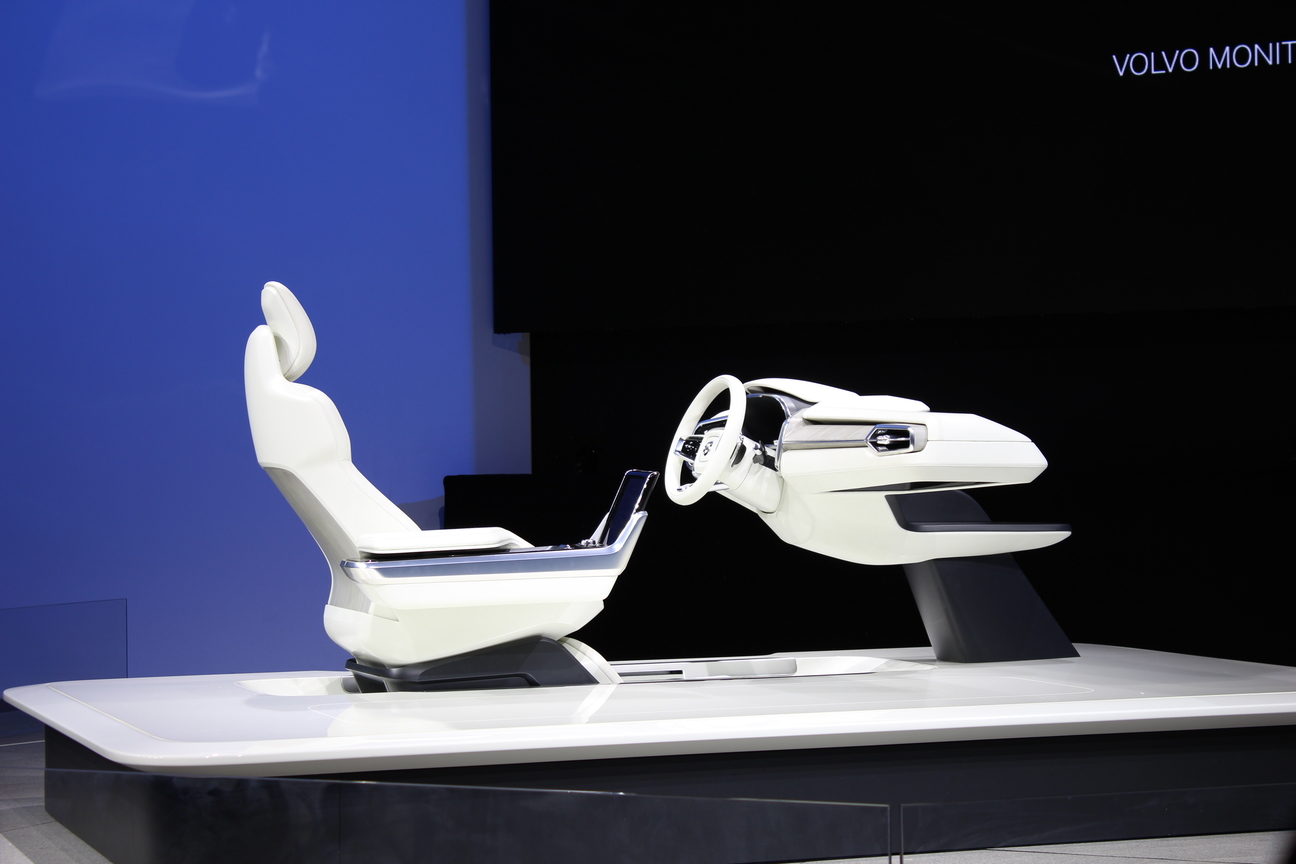Volvo engineers are busily fine-tuning the self-driving technology that the car maker’s top executives hope to launch before the end of the decade. To whet our appetite, the company has trekked out to the Los Angeles Motor Show to introduce a new design study called Concept 26 that hints at what the interior of its first production-bound autonomous car could look like.
As autonomous cars inch towards production, automakers from all around the globe are beginning to show concepts that preview what form the cockpit of tomorrow will take. For example, the Vision Tokyo concept that Mercedes-Benz presented a few weeks ago in the Japanese capital was equipped with a highly futuristic, lounge-like cabin. However, Volvo’s Concept 26 is the first design study that’s built on a platform currently in production.
The Concept 26 can be configured in one of three basic ways called Drive, Create, and Relax, respectively. As its name implies, Drive minimizes distractions to let the driver take the wheel; in other words, it looks similar to the cabin found in a 2016 car. Create allows the driver to work on the go while the car pilots itself thanks to 25-inch monitor cleverly integrated into the passenger side of the dashboard, and a foldable tray table. Finally, Relax moves the driver’s seat into a comfortable reclining position and slides the center console back so that the driver can simply relax and enjoy the ride.
Volvo predicts that American motorists can gain an average of 26 minutes of free time per commute by switching to a self-driving car, a figure that amounts to several hundred hours annually. Motorists who live in crowded areas like Los Angeles and New York City are poised to gain even more. That said, Volvo stresses that self-driving cars aren’t designed take the fun out of driving.
“Driving can still be fun and liberating on the right day and on the right road, but some parts of driving, notably the daily commute in many metro areas, is stressful, frustrating,” explains Anders Tylman-Mikiewicz, the general manager of the Volvo Monitoring and Concept Center, in a statement.
One hundred preselected customers are scheduled to take delivery of an experimental autonomous Volvo in 2017. If everything goes according to plan, a regular-production model will be introduced in select markets shortly after.
Editors' Recommendations
- Google is bringing Chrome browser to cars, even more EV features to Maps
- Volvo EX90 price, range, release date, specs, and more
- Is AMD delaying Ryzen 7000 to give Ryzen 5000 more time to shine?
- 2022 Volvo V90 Cross Country first drive review: Android on board
- 2021 Volvo XC40 Recharge first drive review: Refined EV subtlety








